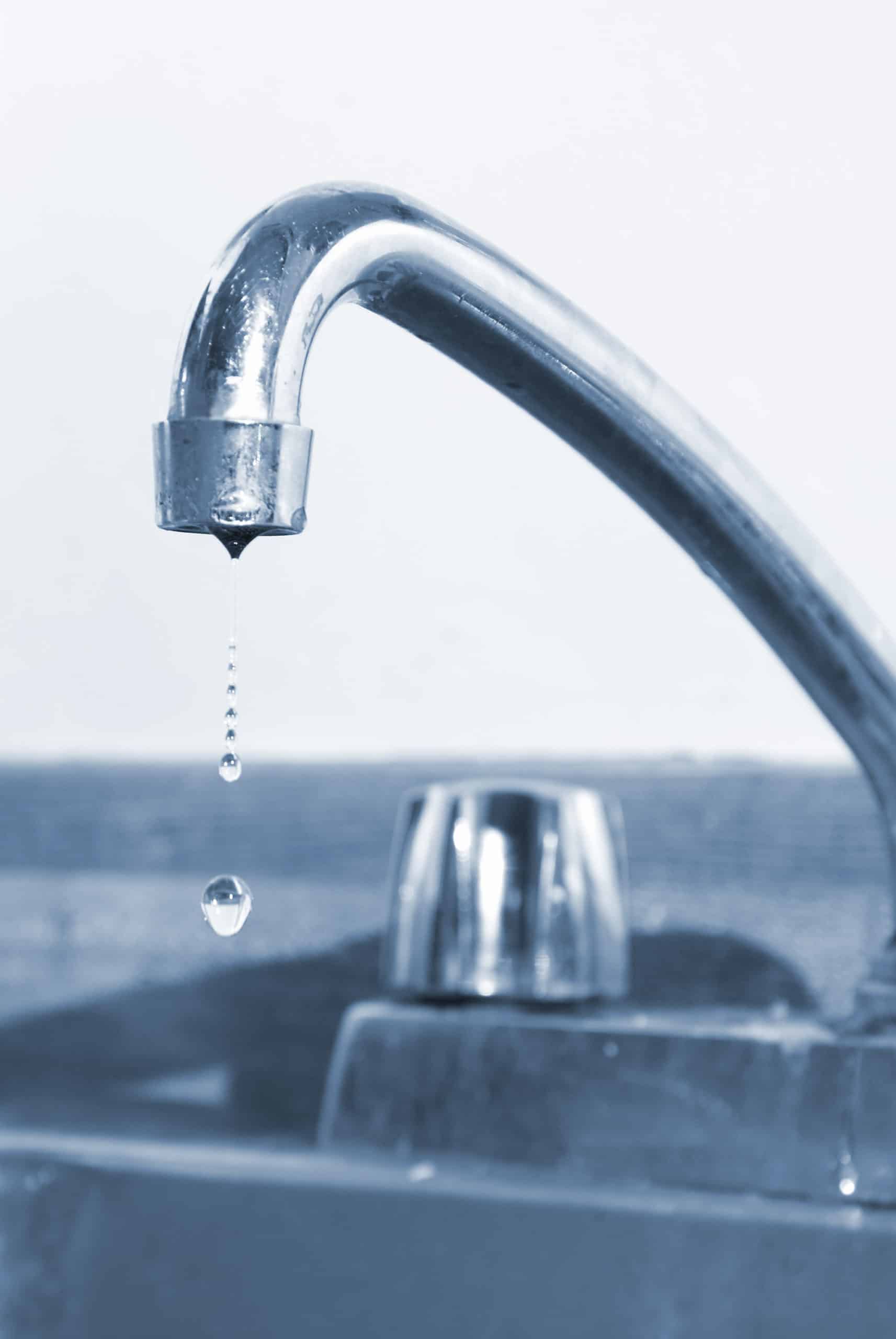We've discovered this article relating to 4 Common Reasons for a Leaky Faucet listed below on the net and decided it made perfect sense to write about it with you on my blog.

Trickling taps may appear like a minor trouble, but their impact surpasses simply the nuisance of the noise. From wasting water to incurring unnecessary financial prices and wellness risks, ignoring a trickling faucet can result in numerous repercussions. In this article, we'll look into why it's critical to address this usual home concern quickly and properly.
Wastage of Water
Ecological Influence
Dripping taps contribute substantially to water waste. According to the Epa (EPA), a single faucet dripping at one drip per second can throw away greater than 3,000 gallons of water annually. This not just stress water resources however also impacts environments and wildlife depending on them.
Step-by-Step Guide to Dealing With a Dripping Faucet
Devices Required
Prior to attempting to take care of a dripping faucet, collect the essential tools, consisting of a flexible wrench, screwdrivers, replacement components (such as washing machines or cartridges), and plumber's tape.
Common Faucet Issues and Their Solutions
Recognize the type of faucet and the certain concern causing the drip. Common troubles include worn-out washers, corroded shutoff seats, or damaged O-rings. Describe maker guidelines or online tutorials for step-by-step assistance on repair work.
Financial Expenses
Boosted Water Expenses
Past the environmental impact, leaking faucets can blow up water expenses substantially. The accumulated wastefulness in time converts right into higher utility costs, which could have been avoided with prompt repair work.
Possible Residential Or Commercial Property Damages
In addition, extended dripping can cause damage to components and surface areas surrounding the faucet. Water buildup can cause staining, rust, and also structural problems if left neglected, leading to added fixing prices.
Health and wellness Problems
Mold And Mildew and Mold Growth
The consistent existence of dampness from a dripping faucet produces a suitable setting for mold and mildew and mildew growth. These fungi not only compromise interior air quality yet likewise posture wellness dangers, especially for individuals with respiratory system conditions or allergic reactions.
Waterborne Diseases
Stationary water in leaking taps can come to be a breeding ground for bacteria and other microorganisms, boosting the risk of waterborne diseases. Impurities such as Legionella germs thrive in stationary water, possibly bring about major ailments when consumed or breathed in.
Do it yourself vs. Professional Repair
Benefits and drawbacks of DIY Fixing
While some may attempt to repair a leaking tap themselves, do it yourself fixings feature their own collection of obstacles. Without correct understanding and tools, DIY efforts can aggravate the problem or result in incomplete fixings, extending the issue.
Advantages of Working With an Expert Plumber
Hiring a specialist plumber makes sure that the underlying cause of the dripping tap is addressed properly. Plumbers have the know-how and tools to diagnose and repair tap concerns successfully, saving time and reducing the danger of additional damage.
Environmental Obligation
Private Payment to Preservation
Taking obligation for taking care of trickling faucets lines up with wider efforts toward water conservation and environmental sustainability. Every person's activities jointly make a substantial influence on maintaining valuable resources.
Sustainable Living Practices
By focusing on timely repair services and adopting water-saving behaviors, people contribute to lasting living techniques that benefit both existing and future generations.
Preventive Measures
Regular Maintenance Tips
To stop dripping taps, carry out regular maintenance such as cleansing aerators, examining for leaks, and changing worn-out parts immediately. Additionally, think about mounting water-saving gadgets or upgrading to extra reliable fixtures.
Significance of Prompt Fixes
Addressing dripping faucets as quickly as they're noticed protects against further water waste and prospective damages, eventually conserving both water and cash in the future.
Influence On Residential Or Commercial Property Value
Understanding of Well-Maintained Property
Maintaining a home in good condition, including dealing with maintenance concerns like trickling taps, improves its perceived worth and charm among potential customers or occupants.
Influence on Resale Value
Residences with properly maintained plumbing fixtures, consisting of taps, command higher resale worths in the real estate market. Resolving leaking faucets can add to a favorable perception during property evaluations and settlements.
Final thought
Dealing with a dripping tap exceeds plain ease; it's a vital step toward saving water, lowering economic prices, and guarding wellness and residential or commercial property. Whether through DIY repairs or expert support, acting to fix trickling taps is a little yet impactful way to promote liable stewardship of resources and contribute to a much healthier, more lasting future.
How to Fix a Leaky Faucet: Step-by-Step Repair Guide
A leaky faucet may seem like a simple annoyance, but if it's not fixed promptly, that leak could cost hundreds to potentially thousands. From water damage to mold, mildew, and high water bills, even a tiny leak can be catastrophic if left unattended. Damage like this can even affect the overall value of your home, so it's important to take the right approach for leaky faucet repair. You may need the help of a plumber in some cases, but we've got a few tips you can try on how to fix a leaky faucet before calling the pros.
Four Faucet Types
When you're learning how to fix a leaky faucet, the first step is knowing what kind of faucet you're working with! There are four common types.
Cartridge Faucets
Cartridge faucets come in one- or two-handled varieties. In one-handled cartridge faucets, hot and cold water combines in a single cartridge. In the two-handled versions, hot and cold water are controlled separately and mixed in the faucet.
Ball Faucets
Ball faucets have a single lever you push up and down to adjust the pressure and rotate to change the temperature. A slotted metal ball controls the amount of water allowed into the spout.
Compression Washer Faucets
They're the oldest type of faucet, but they're still used in many homes — especially older ones. Compression faucets have two separate handles that, when turned, raise or lower the washer that seals a water valve. This valve stops water from flowing through the faucet when it is turned off.
Disc Faucets
Disc faucets rarely need to be repaired due to their maintenance-free design. The water flow is controlled by two discs — the upper one raises and lowers against a fixed lower disc, creating a watertight seal. If your disc faucet starts leaking, you may need to replace the seals or clean residue buildup from the inlets.
Fixing a Leaky Faucet
Step 1: Turn Off the Water
Whether you're learning how to fix a leaky bathtub faucet or how to fix a leaky kitchen faucet, always turn off the water supply to your working area when you're fixing a leak. The last thing you want is a flood added to your list of things to fix.
Look for the shutoff valves below your sink or around the tub and turn them clockwise to stop the water flow. If your faucet doesn't have shutoff valves, you may need to turn off the water for the whole house. Check to make sure it's off by turning the faucet on. If nothing comes out, you're ready to start the repair.
Step 2: Take Apart the Faucet
How you disassemble your faucet depends on the type of fixture you have. You can use a flathead screwdriver to remove the caps on top of the handle or handles for cartridge and compression faucets. Inside, you should see handle screws. Unscrew these with a screwdriver to remove the handle.
Disc- and ball-style faucets will typically have an inlet screw near the handle, and removing that will reveal the interior of the faucet.
Detach the Valve Stem
For cartridge- and compression-style faucets, you'll see the inner valve stem or cartridge once you remove the faucet handles. If you have a compression faucet, unscrew the brass valve stem. If you have a cartridge faucet, pull out the cartridge. If your cartridge has been in place for a while, it may require some tools or extra force to remove it due to mineral deposits.
Examine and Replace Parts
Once you've removed the parts, check them out to confirm what needs to be replaced. You may see corroded rubber washers, O-rings, stems, or cartridges. On a ball-style faucet, check the seats and springs for damage.
If you need to repair a leaky disc faucet, check the inlet and seals on the lower disc.
Once you determine what parts must be replaced, visit your local hardware store. Bring the damaged parts with you to ensure you can purchase the correct components to replace them.
Clean Valves and Faucet Cavity
If you've removed a stem or cartridge, you may notice mineral buildup in the faucet's threads. Use white vinegar to clean the valve seat by soaking it for a few minutes, then scrub it away with a soft toothbrush and rinse with warm water. You can also clean the interior of the faucet in the same way.
Reassemble the Faucet
Once your faucet is cleaned and the required parts have been replaced, it's time to reassemble it. Put the pieces back together and slowly turn the water supply back on. Doing this slowly is crucial because too much initial water pressure can damage the new hardware you've just installed.
https://homewarranty.firstam.com/blog/how-to-fix-leaky-faucet

I have been very fascinated with Water Dripping from Faucet: Why and How to Fix and I really hope you appreciated the entire blog posting. Are you aware of somebody who is in to the subject? Feel free to share it. We treasure reading our article about Why It's Important to Fix Leaky Faucets.